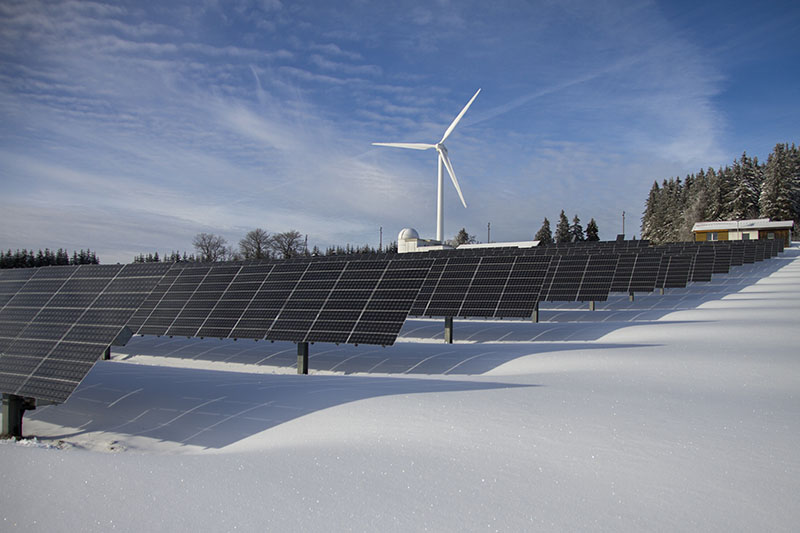In our recent blog Rethinking energy efficiency in the US we examined the challenges that energy companies in the United States face in converting customers to electrical appliances and products. The same challenges apply across the globe. In the US, it would cost a household around $70,000 to completely decarbonize – something that only the wealthiest households can afford.
The biggest challenge is that homeowners are not experts in the subject of decarbonization and electrification – nor should they be expected to be. Success in helping households to electrify their homes and lives is going to rely on targeting the right households with the right information and advice relating to products and options appropriate to an individual’s circumstances and financial situation.
Here at Advizzo we are using advanced segmentation to help utilities target their customers with appropriate and personalized messages relating to electrification and decarbonization.
What is customer segmentation?
Customer segmentation is the process of separating your customers into groups based on the certain traits or factors that we know or can learn about them. Segmentation offers a simple way of organizing and managing your company’s relationships and communications with its customers.
The process of segmentation makes it easier to tailor and personalize your marketing, service and sales efforts to the needs of specific groups of customer. In return this increases campaign success and conversion rates, whilst at the same time boosts customer engagement and loyalty. According to WpsWING, 77% of the returns generated come from targeted campaigns built with the help of customer segmentation!
Here are some different types of segmentation model:
|
SEGMENTATION MODEL |
HOW TO SEGMENT CUSTOMERS |
|
Demographic Segmentation |
Age, gender, income, education, marital status |
|
Geographic Segmentation |
Country, state, city, town, post or zip code |
|
Psychographic Segmentation |
Personality, attitude, values, interests |
|
Technographic Segmentation |
Mobile-use, desktop-use, apps, software |
|
Behavioural Segmentation |
Tendencies and frequent actions, feature or product use, habits |
|
Needs-Based Segmentation |
Product/ service must-haves and needs of specific customer groups |
|
Value-Based Segmentation |
Economic value of specific customer groups on the business |
How will you segment your customers?
When it comes to leading customers on a journey towards electrification it’s important to understand which customers are more inclined towards electrification. They’re clearly going to be easier to persuade and convert and should therefore be your priority segment.
In our blog Help home energy customers on their journey to electrification we looked at the U.S. based customer ‘segment’ that is most likely to convert to electrification products, as defined by eSource.
They are:
- Aged 25-44
- Live in urban areas in the Middle Atlantic or South Atlantic US Census divisions
- Tend to have a bachelor’s degree or higher
- Are typically families with children
- Have a household annual income of $100,000
- Are motivated by safety and reliability to purchase electrification technologies
How Advizzo can help
We apply data science and behavioral science to segment our utility client’s customers and target them with information and messages appropriate to their status, attitudes, economic means, interests etc. We also conduct surveys and audits to gather more information that enables us to further refine the information and segments.
It’s exactly what we’re going for Sacramento Municipal Utility District (SMUD). We are working with SMUD on its new Home Electricity Reports (HERS) program. The program will focus on decarbonisation and Time Of the Day awareness. The aim is to reduce carbon cumulatively by providing customers with tailored messaging relating to their electricity consumption, as well as personalized decarbonization tips to encourage customers to change their behavior and reduce their consumption, especially during Peak periods.
It will also encourage customers to switch from gas powered systems to electric powered systems, as well as increasing the use of PV, EV Battery storages, and efficient electric appliances.
SMUD is leveraging Advizzo’s Data and Behavioral Science based customer engagement platform, alongside our experience and expertise. Together we are designing and delivering a state-of-the-art HER program that achieves measurable decarbonization outcome; increases customer satisfaction; educates and empowers customers to utilize their electricity on SUMD’s Time-of-Day rates; and increases participation in energy efficiency, renewable and customer service programs.
How will you encourage your customers to decarbonize and electrify their homes? Let us apply advanced segmentation and data and behavioral science to your efforts – and help you reap the rewards.
